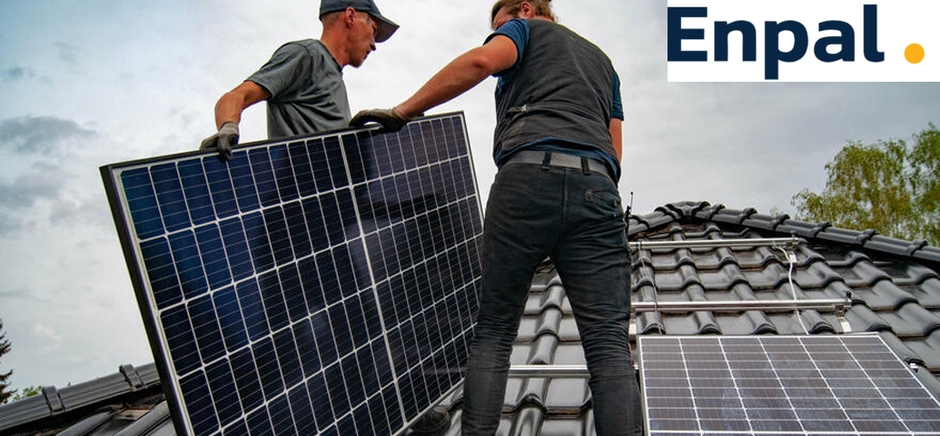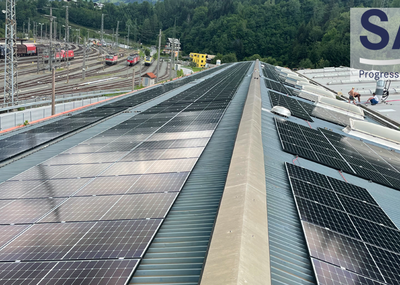Although the sun shines comparatively little in the Netherlands on average, with around 1,790 hours annually, solar energy is used particularly effectively in Germany's neighboring country: With an average share of 14.9 percent, the Netherlands has the highest value of solar energy produced in Europe. This is the result of a study by the energy company Enpal (www.enpal.de). For the study, the monthly energy data of a total of 38 OECD nations as well as other countries since January 2022 were determined and compared based on data from the International Energy Agency (IEA).
In these nations, the solar output is proportionally used the most
With an average solar energy share of 15.8 percent of the electricity produced, Chile is the world leader among the nations. Australia also makes comparatively good use of solar energy, with a proportionate share of 15.2 percent. Among European countries, the expansion of solar energy is most advanced in the Netherlands: At 14.9 percent, the country has the highest value in Europe. The nation is followed by Greece, Hungary and Cyprus, whose produced electricity consists of 14.8, 13.6 and 12.2 percent, respectively, of solar energy. Malta and Spain are two other countries in Southern Europe that effectively use their hours of sunshine (11.7 and 11.5 percent, respectively).
Germany ranks ninth: In the country, an average of 10.9 percent of electricity is generated with solar energy. Especially in the summer months from May to August, the share is comparatively high and ranges between 17 and 19 percent. In January and December, on the other hand, the yield is lowest at 1.9 and 1.5 percent, respectively.
Croatia triples production of solar energy
Comparing the monthly figures from January to April 2023 with the 2022 shares, Croatia caught up: by an average of 197.2 percent, the country's monthly production of solar energy increased in the first four months of this year. Canada, Brazil, and Portugal also saw large increases of 92.8, 67 and 62.1 percent, respectively. In Finland, the share of solar energy in 2022 was only 0.5 percent. In the first tertial of 2023, the country was able to increase by 59.1 percent.
By contrast, the share at the beginning of 2023 declined in Lithuania: 30.5 percent less solar energy was produced in the country compared with the first four months of 2022. Colombia, the Czech Republic, and Slovakia also started the new year with a minus compared with the previous year (minus 24.4, 23.1 and 22.4 percent, respectively).
Production of solar energy in Germany comparatively low
Germany was also unable to match the previous year's level: between January and April 2023, the amount of solar energy produced fell by an average of 9.4 percent. This was mainly due to the rainiest March since 2001: while 5,728 gigawatt hours of solar energy were still produced in that month in 2022, the figure for March 2023 was only 3,959 gigawatt hours.
China produces the most - Germany in fifth place
In terms of absolute numbers, China is ahead of the U.S. and Japan (188,300 and 93,265 gigawatt hours, respectively) with a total production of 416,271 gigawatt hours per year. India also produces a lot of solar energy with 92,198 gigawatt hours. Germany rounds out the top five with 57,895 gigawatt-hours. In North Macedonia, Serbia, and Latvia, however, total solar energy production is manageable: 33.8, 14.6 and 6.7 gigawatt-hours, respectively, are produced annually by the three European nations.
Dr. Wolfgang Gründinger, Chief Evangelist at Enpal, states: "Solar energy is on the rise worldwide. Even supposedly sun-poor regions are focusing on cheap and clean energy from the sun. Our neighbour, the Netherlands, shows how to push solar expansion: with little bureaucracy and fast processes. Subsidy programs, such as low-interest loans, can also help the switch."
About the study
For the analysis, the absolute - as well as the proportional production of solar energy to total energy production in 2022 of 47 nations - was determined using by data from the International Energy Agency. This includes a total of 38 OECD countries as well as nine other nations. In addition, trends between January and April 2023 were compared to the same months in the previous year.
About Enpal
Enpal, the Greentech unicorn in Germany, develops an integrated total solution for renewable energies, and thus pioneers the energy transition. The company, which has been profitable since 2022, holds the market leadership for residential solar installations in Germany, selling several thousand new rooftop PV systems every month. In this context, the solar system is part of the integrated energy ecosystem of electricity storage, charging station, heat pump and the Enpal Energy Manager, which is an intelligent combination of hardware and software.
Founded in 2017, Enpal is digitizing and revolutionizing the purchase of green energy for a fossil fuel independent home with its rental and flexible model. Nearly 50,000 households, equipped by Enpal, already make up our climate-friendly energy community in Germany. The world's largest impact and technology investors such as, TPG Rise Climate, Softbank Vision Fund II, Princeville Climate Technologies, and The Westly Group, form the Enpal community in Germany. For customer growth, Enpal receives support from funding partners such as BlackRock, ING and DWS.
Source: www.enpal.de





